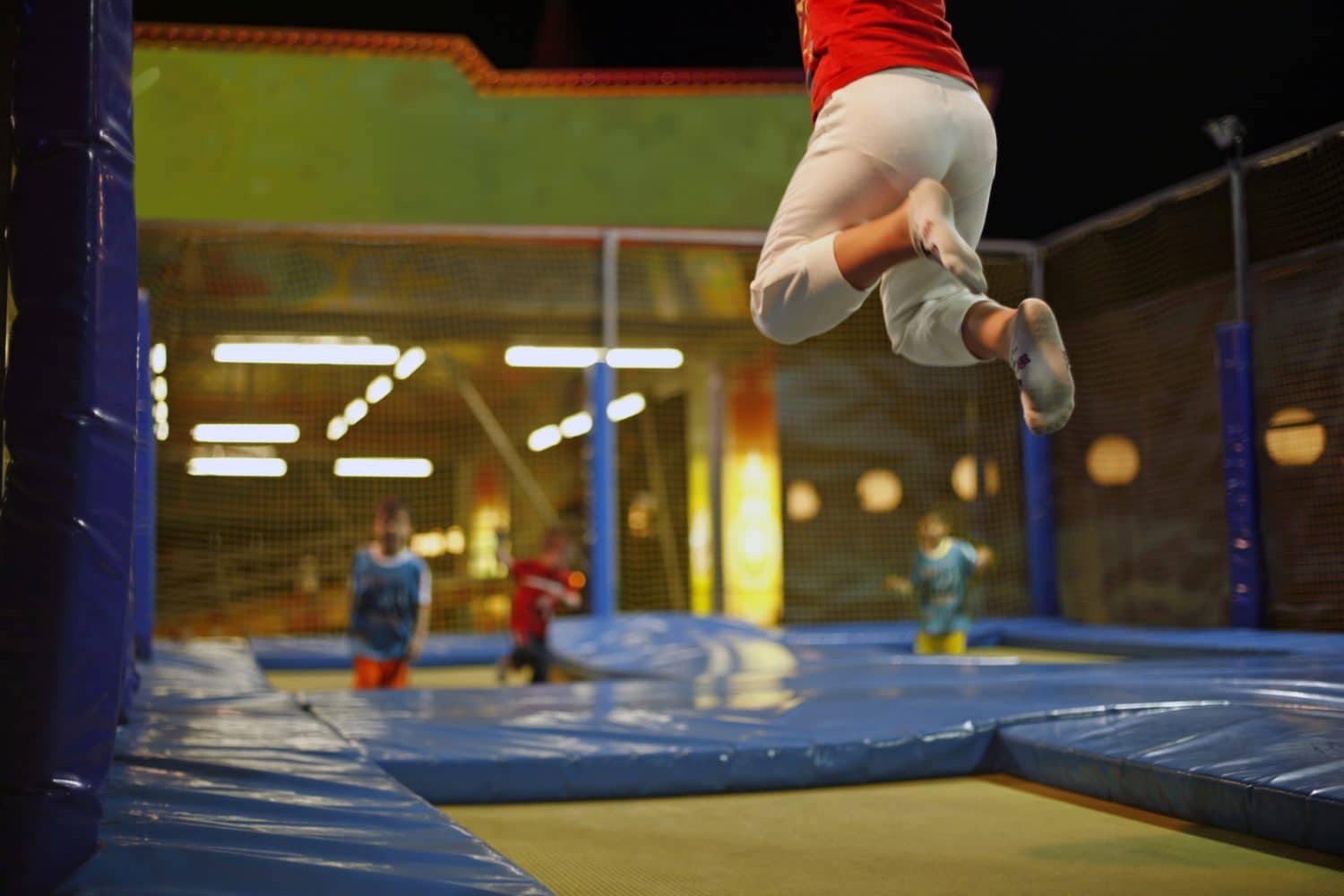If you don’t have a trampoline park in your area, you may see one coming soon. Six years ago, there were only six indoor trampoline parks in the United States. Before the end of the calendar year in 2013, there were about 160 of them across the country – that’s a 2,666% increase.
Along with the increased popularity of these bounce houses, however, has come an increased number of injuries. Although injury rates are difficult to ascertain for any industry, recreational activity, or sport, the estimated rates of injury for any given trampoline park is up to 2.9 injuries per thousand visits. The injury rates for activities like skiing are comparable at about 3 injuries per thousand visits. The difference is, an average visit to a bounce house lasts about 45 minutes while the average visit to a ski resort is probably about 5 hours, if not more. So, the time-adjusted rates of injury are actually much higher for trampoline parks – over five times higher, according to the available data.
Of course, some of these injuries are not serious, but some of them can be catastrophic. At Crosley Law Firm, we regularly handle child injury cases, and someone recently wrote us about an incident at a trampoline park here in Texas. Before their child could play at the park, the parents had to sign a waiver and liability release, which is something that many of us do to participate in fun and active recreational activities. However, while their child was jumping in a bounce house, he sustained major injuries, including bone fractures. On top of this, the staff wasted time trying to question the child and get an incident report filed instead of calling an ambulance – they didn’t even realize the child’s bones were broken!
As you can see from these images, the injuries this child sustained were much worse than the parents ever could have expected. With severe injuries and rising medical bills, they wanted to know what rights they had to pursue legal action after signing the paperwork at the trampoline park.
Many people assume that because they have signed some official documentation, they have surrendered all their rights if something unfortunate happens, but as Tom Crosley explains in this video, that is not always the case. Sometimes, the particular circumstances surrounding your child’s (or your own) injury are not covered in the documentation. One example of this is when certain safety procedures are not in place or when employees are negligent.
Other times, the waivers, contracts, or releases that you sign for yourself or your child are not even enforceable – this is often the case with waivers for minors especially. Many establishments simply use this paperwork as a way to discourage people from pursuing legal action.
Your best course of action if you have been injured at a trampoline park or other recreational facility, even if you have signed waivers, releases, or any other paperwork, is to contact an experienced attorney such as the ones at Crosley Law Firm. We are experts in personal injury, and we offer free consultations so you can get your questions answered without having to worry about any expenses. Contact us today or submit the details of your situation online for a free case review.
References:
Dewberry, D. (2013, October 11). Trampoline park boom sparks safety concerns. NBC Dallas-Fort Worth. Retrieved from http://www.nbcdfw.com/investigations/Trampoline-Park-Boom-Sparks-Safety-Concerns-225852071.html
Paper, T. (2012, November 7). An old risk and a new risk. Think Before You Bounce. Retrieved from http://www.thinkbeforeyoubounce.org/research-on-injury-rates/







